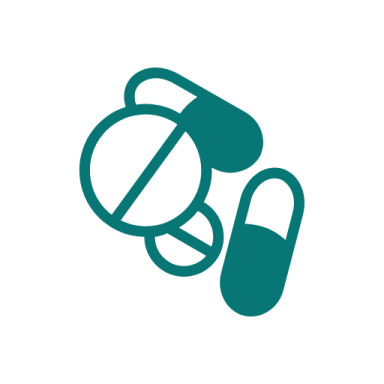Women’s Health: A Guide to Legal Resources

Across their life spans, women face an array of health-related experiences. Access to treatment, health insurance coverage, and workplace and cultural standards all can play a role in a woman’s short- and long-term mental and physical well-being. The following list of resources— along with our glossary of women’s health legal terms—can help women and their health care providers learn more about their legal rights when it comes to their health, how to navigate legal challenges if they arise, and how to advocate for better care for themselves and all women.

Abuse and Violence Against Women
Confidentiality Policy for Victims of Sexual Assault (Department of Defense)
Guidelines for confidential reporting regarding sexual assault for members of the Department of Defense, including information on accessing medical care, counseling, and victim advocacy whether the individual initiates an investigation or not.
The National Domestic Violence Legal Help Hotline
The number for the hotline is 1-800-799-SAFE (7233). Though hotline operators are not legal advocates and do not give legal advice, they can connect callers with resources for legal help.
VAWnet.org is a project of the National Resource Center on Domestic Violence and provides thousands of materials on gender-based violence and related issues. The site offers materials for patients as well as educational and legal resources for counselors who work with people who have experienced domestic violence.
A guide to plain-language legal information for men and women who have experienced abuse, with resources on state and federal laws, restraining orders related to domestic violence, custody issues, child support, and more.
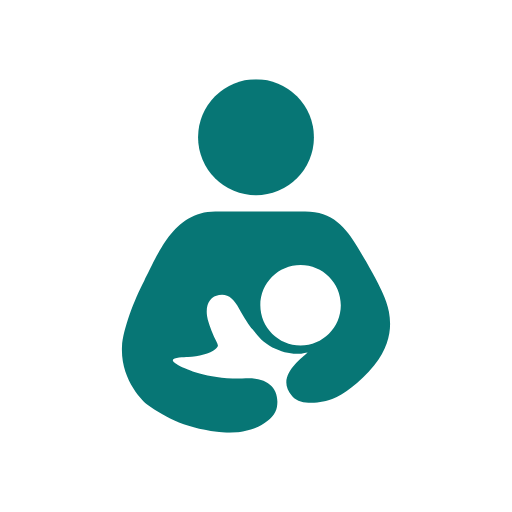
Breastfeeding
United States Department of Labor – Break time for nursing mothers
Here you’ll find a brief description of the law and a list of frequently asked questions about nursing mothers’ rights to express milk at work.
United States Breastfeeding Committee
The USBC maintains a list of breastfeeding coalitions across the United States, including tribal and cultural coalitions.
National Conference of State Legislatures – Breastfeeding state laws
Access information on a woman’s right to breastfeed at work under the Affordable Care Act, as well as on federal health reform and nursing mothers.
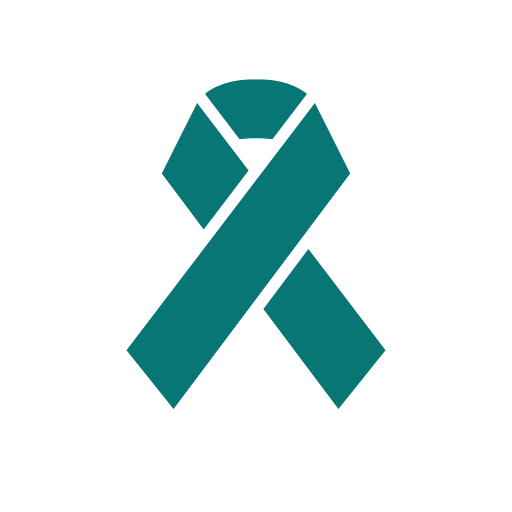
Cancer
An American Cancer Society initiative, the Cancer Action Network focuses on making sure elected officials are working on policies related to cancer—from health insurance coverage and improved access to medications and care to tobacco control regulations and cancer research—in an effort to ease suffering and reduce deaths.
Centers for Medicare & Medicaid Services: Women’s Health and Cancer Rights Ac
CMS provides an explanation of the Women’s Health and Cancer Rights Act of 1998 (WHCRA), a federal law that provides protections to patients who choose to have breast reconstruction in connection with a mastectomy.
Metastatic Breast Cancer Network
The Metastatic Breast Cancer Network is a national, independent, nonprofit, all-volunteer patient advocacy group dedicated to the unique concerns of women and men with the deadliest form of breast cancer. The organization’s website provides education and information on treatments and coping with the disease, and how to advocate for improved coverage and access to treatments.

Diversity
American Muslim Health Professionals: Advocacy
The advocacy arm of AMHP responds to policy developments that affect the American Muslim health professional community, educates members and their communities on health policy, and advocates on behalf of health professionals and community clinics throughout the US.
Asian Pacific Institute on Gender-Based Violence
Islamic Marriage Contracts: A Resource Guide for Legal Professionals, Advocates, Imams and Communities is a report from the Asian Pacific Institute on Gender-Based Violence that provides an overview of marriage and divorce among American Muslims for judges, lawyers, advocates, social service providers, imams, community leaders, and community members. The guide explores issues of Islamic and US family laws as they relate to religious and cultural practices of American Muslim couples and families.
Black Women’s Health Imperative
The Black Women’s Health Imperative works to attain access to quality and affordable health care for black women and girls, incorporate diversity in clinical research, and secure equal and adequate response during public health emergencies.
American University’s National Immigrant Women’s Advocacy Project
NIWAP (pronounced new-app) addresses the needs of immigrant women, children, and victims of domestic violence, sexual assault, and other crimes by advocating for reforms in law, policy, and practice. They provide training, legal and social science research, policy development, and technical assistance to advocates, lawyers, health care providers, and law enforcement, among others.
National Institute on Minority Health and Health Disparities
Part of the National Institutes of Health, NIMHD examines biological and nonbiological factors that affect health disparity populations in the US, including: “Racial and ethnic minority groups, rural populations, populations with low socioeconomic status, and other population groups.”
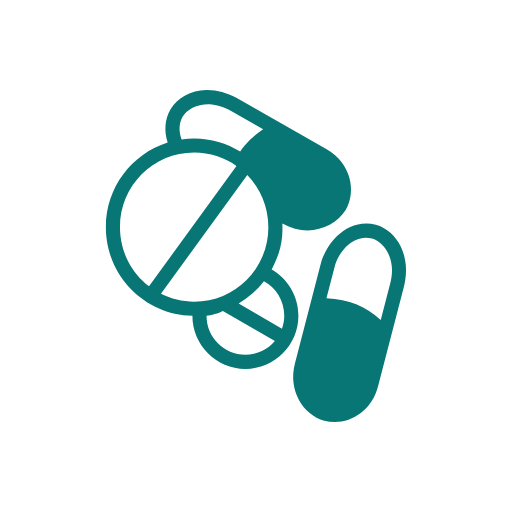
Drugs
US Food and Drug Administration: Clinical Trials
Learn the ins and outs of the FDA’s clinical trials process, including the difference between research versus treatment, informed consent, and diversity in clinical trial participation.
An independent national patient organization, Patients for Affordable Drugs offers advice for patients on how to support policy changes that drive down drug prices.
This easy-to-follow interactive graphic from The Washington Post gives a short visual history of how marijuana laws have evolved in the US during the past few decades.

Physical Health
The HealthCare.gov site offers information on the comprehensive health care reform law enacted in March 2010 (also sometimes called PPACA or “Obamacare”), including a downloadable PDF of the law.
This global foundation supports women’s human rights across all borders with a focus on promoting equality, empowerment, and justice for women, girls, and LGBTQI individuals, including “often forgotten” trans individuals, women of color, indigenous women, and refugees.
Human Rights Watch – Women’s rights
Human Rights Watch is a nonprofit organization made up of professionals from around the world. The organization publishes reports and briefings on human rights conditions in dozens of countries and meets with governments, the United Nations, regional groups (e.g., the African Union, the European Union), financial institutions, and corporations pressing for changes in policy and practice that promote human rights around the world. Their website features news reports, interviews, and videos related to women’s health rights.
Henry J. Kaiser Family Foundation: Women’s Health Policy
The Kaiser Family Foundation provides current analysis on the health policies that shape women’s access to care and coverage throughout their lives.
National Women’s Health Network
The group’s policy and advocacy efforts center around improving women’s health by advocating for policy change.
Thousands of talks covering national and global health issues, many of which focus on women’s health and health rights.
U.S. Department of Health and Human Services – Health care rights and responsibilities
This department of the federal government aims to protect the health of all Americans and provides essential human services. Learn more about basic health rights as a US citizen and find links to additional information.

Mental Health
American Psychiatric Association: Mental Health Parity Rights
Federal law says that insurers cannot discriminate against patients with mental illness, including substance use disorders. The American Psychiatric Association offers information on what constitutes a violation under the Mental Health Parity and Addiction Equity Act (MHPAEA) and how to file a complaint if a person thinks their rights are being violated.
American Psychiatric Association: Policy Statements
Using the American Psychiatric Association’s Policy Finder tool, you can review its positions on women’s health topics ranging from abortion to access to care for transgender and gender-diverse individuals to racial discrimination and everything in between.
American Psychological Association: Women’s Health
The American Psychological Association advocates for federal funding for women’s health care. Their website offers information on substance use disorders, health disparities, and military and veteran mental health rights, among other topics.
American Bar Association: Standing Committee on Legal Assistance for Military Personnel
Military personnel and veterans seeking legal advice and representation for physical and mental health related issues can contact the ABA to learn more. The ABA Military Pro Bono Project, for example, accepts case referrals from military attorneys on behalf of junior-enlisted, active-duty military personnel facing civil legal issues and works to place cases with pro bono attorneys.
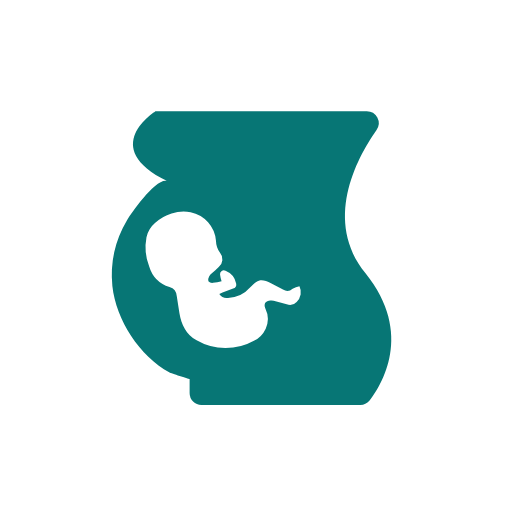
Pregnancy and work
National Women’s Law Center: The Pregnant Workers Fairness Act
In a downloadable report, the National Women’s Law Center provides a plain-language overview regarding a pregnant woman’s rights at work under the law, including sample stories about pregnant women in various professions.
The Office on Women’s Health: Know your pregnancy rights
A US Department of Health and Human Services, the OWH website provides many resources for pregnant women, including a review of a pregnant woman’s rights under the law and links to other related resources.
US Equal Employment Opportunity Commission: Pregnancy discrimination
The EEOC website offers comprehensive info on pregnancy discrimination, including hiring, pregnancy, maternity leave, health insurance, and other issues. You can also find an overview of The Pregnancy Discrimination Act (amended Title VII of the Civil Rights Act of 1964).

Reproductive rights – general
American College of Obstetricians and Gynecologists: Advocacy
ACOG is the professional membership organization for clinicians in the OB-GYN specialty and has a wing dedicated to advocacy. They work to ensure lawmakers support OB-GYN practices and their patients and, when necessary, take a stance against political efforts that aim to harm women and the OB-GYN medical specialty.
The Center for Reproductive Rights
This global legal advocacy organization focuses on reproductive rights, with expertise in both US constitutional and international human rights law. They work to expand access to reproductive healthcare, including birth control, safe abortion, and prenatal and obstetric care.
The Guttmacher Institute provides balanced, nonpartisan information on sexual activity, contraception, abortion, and childbearing. Resources include overviews on minor consent law, abortion law, medical abortion law, refusal to provide health services, laws and policies regarding substance use during pregnancy, Medicaid and family planning, and more.
The National Latina Institute for Reproductive Health
The National Latina Institute for Reproductive Health focuses on three main areas the group refers to as “reproductive justice” issues: sexual and reproductive health equity, abortion access and affordability, and immigrant women’s health and rights.
National Women’s Law Center: Health Care and Reproductive Rights
The Center, now in its fourth decade, aims to protect and promote equality and opportunity for women and families by championing policies and laws that help women and girls.
For more than a century, this nonprofit organization has provided reproductive health care and sex education in the US and globally. Planned Parenthood advocates for policies that protect and promote women’s health, and their website provides resources for women who have questions about abortion, emergency contraception, and sexual orientation and gender.

LGBTQ health
For almost four decades, the organization has worked with youth leaders to ensure that all young people’s rights are respected and that they have the tools to protect their sexual and reproductive health. The group’s policy and advocacy page provides specific legal resources.
Grounded in legal expertise and committed to racial justice, TLC is the largest national trans-led civil rights organization. The group’s work spans issues ranging from health and social justice to immigration and public housing.
Glossary of Women’s Health Legal Terms
Health care law and policy can be confusing, but understanding some of the legal language used by lawmakers and others in the field can help. The following is a list of commonly used women’s health legal terms and definitions.
Affordable Care Act:
The comprehensive health care reform law enacted in March 2010. Also sometimes called ACA or “Obamacare.”1
CMS:
The acronym for the Centers for Medicare & Medicaid Services, part of US Department of Health and Human Services (HHS). CMS provides health coverage to more than 100 million people through Medicare, Medicaid, the Children’s Health Insurance Program (CHIP), and the Health Insurance Marketplace. The goal of CMS is to provide access to high-quality care at lower costs.2
Do-not-resuscitate (DNR):
A medical order written by a doctor with the patient (or a patient proxy or family member) in advance that instructs health care providers not to perform cardiopulmonary resuscitation (CPR) in an emergency if a patient stops breathing or if their heart stops beating.3
Electronic health record (EHR):
A patient’s digital health record intended to be shared with other authorized providers. It might include images from one test center with blood test results from a lab, and a medical history from a primary care doctor and other medical specialists. It can help reduce medical errors and unnecessary repeat tests. 4
Electronic medical record (EMR):
A health care practice’s electronic version of a patient’s chart, not meant to be shared outside of a medical practice 5
Evidence-based medicine:
Conscientious, explicit, judicious, and reasonable medical decision-making based on the use of the best available research evidence, a clinician’s expertise, and taking into account each individual patient’s preferences and values. 6
Health advocacy:
A health promotion activity that aims to overcome barriers to public health and occupational health. On the individual level, a patient advocate—either a personal contact or professional—helps a patient navigate the health care system, including finding appropriate medical care, understanding a diagnosis and treatment, setting up tests, and assisting with health insurance issues.7
Health law:
Health laws and legal frameworks provide a foundation for strong and resilient health systems. They can establish universal health coverage policy or focus on individual issues such as abortion, egg donation, and sexual assault.8
Health policy:
Decisions, plans, and actions developed by government and other policymakers aimed at achieving specific health care goals within a society.9
HIPPA:
The acronym for the Health Insurance Portability and Accountability Act passed by Congress in 1996. HIPPA requires the protection and confidential handling of patients’ protected health information.10
Informed consent:
Patients have the right to receive information and ask questions about their diagnosis and recommended treatments so that they can make well-considered decisions about care and potential outcomes, including risks and benefits.11
Maternal health:
The health of women during pregnancy, childbirth, and the postpartum period.12
Maternal mortality: The health of women during pregnancy, childbirth, and the postpartum period.13
Medical ethics:
Standards of conduct that define the essentials of honorable physician behavior.14
Medicaid:
A health care assistance program that serves low-income people of all ages. Patients usually pay no part of costs for covered medical expenses or just a small co-pay. It is run by state and local governments within federal guidelines.15
Medicare:
A medical insurance program for people 65 and older, people younger than 65 with disability, and people who are receiving dialysis for end stage renal disease or are in need of a kidney transplant.16
Power of attorney for health care (POAHC):
A POAHC is a document that is created by the patient/individual and appoints another person as their health care agent. That person has the legal right to make health care decisions if or when the patient becomes unable to make health care decisions for themselves.17
Reproductive health:
The diseases, disorders, and conditions that affect the male and female reproductive systems during all stages of life18
Sexual and reproductive health rights:
Women’s sexual and reproductive health is related to many human rights, including the right to life, the right to be free from torture, the right to health, the right to privacy, the right to education, and the prohibition of discrimination19
Telemedicine:
The use of telecommunications, such as audio and video conferencing, between a patient and a physician (or other health care provider) to diagnose, monitor, and care for the patient.420
Vulnerable:
Vulnerable communities include individuals struggling to make ends meet financially, racial and ethnic minorities, those with physical or mental health conditions, the uninsured and underinsured, low-income children, the elderly.21
Sources
- US Centers for Medicare & Medicaid Services. “Affordable Care Act,” HealthCare.gov. Accessed December 4, 2018.arrow_upwardReturn to footnote reference
- US Department of Health and Human Services. “Centers for Medicaid and Medicare Services,” USA.gov. Accessed December 4, 2018.arrow_upwardReturn to footnote reference
- US National Library of Medicine. “Do-Not-Resuscitate Order,” MedlinePlus.gov, Accessed December 4, 2018.arrow_upwardReturn to footnote reference
- US Centers for Medicare & Medicaid Services. “Electronic Health Records,” CMS.gov. Accessed December 4, 2018.arrow_upwardReturn to footnote reference
- Office of the National Coordinator for Health Information Technology. “What Are the Differences Between Electronic Medical Records, Electronic Health Records, and Personal Health Records?,” HealthIT.gov. Accessed December 4, 2018.arrow_upwardReturn to footnote reference
- UNC Health Sciences Library. “Anesthesiology Residents: EBM Review and Practice,” UNC University Libraries website. Accessed December 4, 2018.arrow_upwardReturn to footnote reference
- World Health Organization. “Workplace Health Promotion,” WHO.int. Accessed December 4, 2018arrow_upwardReturn to footnote reference
- World Health Organization. “Health Laws and Universal Health Coverage,” WHO.int. Accessed December 4, 2018.arrow_upwardReturn to footnote reference
- World Health Organization. “Health Policy,” WHO.int. Accessed December 4, 2018arrow_upwardReturn to footnote reference
- US Department of Health and Human Services. “Health Information Privacy: Summary of the HIPAA Privacy Rule,” HHS.gov. Accessed December 4, 2018.arrow_upwardReturn to footnote reference
- The American Medical Association. “Informed Consent,” AMA-Assn.org. Accessed December 4, 2018. arrow_upwardReturn to footnote reference
- World Health Organization. “Maternal Health,” WHO.int. Accessed December 4, 2018.arrow_upwardReturn to footnote reference
- World Health Organization. “Maternal Mortality Ratio,” WHO.int. Accessed December 4, 2018.arrow_upwardReturn to footnote reference
- World Health Organization. “Maternal Mortality,” WHO.int. Accessed December 4, 2018.arrow_upwardReturn to footnote reference
- The American Medical Association. “Frequently Asked Questions on Ethics,” AMA-Assn.org. Accessed December 4, 2018.arrow_upwardReturn to footnote reference
- U.S. Department of Health and Human Services. “What Is the Difference Between Medicare and Medicaid?” HHS.gov. Accessed December 4, 2018.arrow_upwardReturn to footnote reference
- United States government. “Navigating Power of Attorney: How to Help Loved Ones Manage Their Money,” USA.gov. Accessed December 4, 2018.arrow_upwardReturn to footnote reference
- National Institute of Environmental Health Sciences, NIH. “Reproductive Health,” NIEHS.NIH.gov. Accessed December 4, 2018.arrow_upwardReturn to footnote reference
- United Nations Human Rights Office of the High Commissioner. “Sexual and Reproductive Health Rights,” OHCHR.org. Accessed December 4, 2018.arrow_upwardReturn to footnote reference
- American Telemedicine Association. “About Telemedicine,” Americantelemed.org. Accessed December 4, 2018.arrow_upwardReturn to footnote reference
- Centers for Disease Control and Prevention. “Reaching At-Risk Populations in an Emergency,” CDC.gov. Accessed December 4, 2018.arrow_upwardReturn to footnote reference







